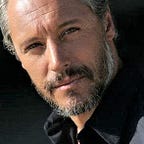Plainly Put
What is Consciousness
Cracking the code
Have you ever wondered how your brain creates your conscious experiences and inner thoughts? It’s one of the biggest mysteries in science that experts have long debated, and this recent study brought together researchers with different perspectives to see if their theories could be combined.
The leading explanations
Scientists have proposed several major theories to explain how consciousness arises from the brain’s activity:
Global Neuronal Workspace Theory
This theory says conscious experiences happen when information gets spread and integrated across a global network in your brain through long-range neural connections. This allows the information to be accessed for reasoning, reporting, and controlling behaviors.
Integrated Information Theory
This view emphasizes that consciousness comes from highly interconnected and specialized patterns of activity within networks of neurons in the brain. It uses math to model how the way neurons share information gives rise to specific conscious experiences.
Recurrent Processing Theory
According to this theory, conscious perception requires neural activity to go back-and-forth repeatedly, rather than just a one-way flow. It separates the feeling of an experience from the ability to access and report that experience, linking them to different memory systems.
Predictive Processing & Neurorepresentationalism
This perspective proposes that the brain doesn’t just extract information from the world, but actively constructs internal models by inferring the likely causes of sensory inputs. When these inner models become rich enough, they correspond to our conscious awareness.
Dendritic Integration Theory
This theory focuses on how consciousness depends on completing neural loops between brain regions and structures called the thalamus, made possible by processing within neuron branches called dendrites.
Finding Common Patterns
While these theories have often been presented as competing explanations, the researchers argue they don’t necessarily contradict each other completely. Instead, many point to fundamental brain mechanisms like:
- Repeated back-and-forth neural communication rather than just a one-way flow
- Integration of information across distributed brain networks
- Differentiated, specialized patterns of neural activity
The theories also seem to explain different aspects of consciousness — like the qualitative feeling of an experience versus the ability to access and report that experience.
Towards a Unified Theory
By looking at where the theories overlap, the researchers aim to work towards an integrated theory that combines useful parts of each framework.
Some key principles they highlight include:
- Consciousness likely arises from large-scale coordination across brain networks through repeated interactions, not just one-way sensory processing.
- Both the integration and specialization of neural activity patterns shape conscious experiences.
- Different types of memory and cognitive processes map to the qualitative feeling versus the reportable access of experiences.
- The inner workings of neurons and neural circuits like dendrites and thalamus-cortex loops provide crucial requirements for consciousness.
While a unified explanation remains elusive, examining the converging mechanisms across theories provides potential paths toward theoretical integration by reconciling findings across levels of explanation.
The Quest Continues
Not all existing theories may stand the test of time, as often happens in science’s journey. However, this collaborative approach focusing on grounded concepts like complexity, representation, and recurrent processing across levels takes a constructive step forward in long-standing debates.
Unravelling how subjective experiences emerge from physical brain processes is immensely challenging. But fostering dialogue across perspectives could accelerate breakthroughs.
As our understanding progresses, an integrated theory illuminating the neural basis of consciousness may finally solve this age-old puzzle of human existence.
